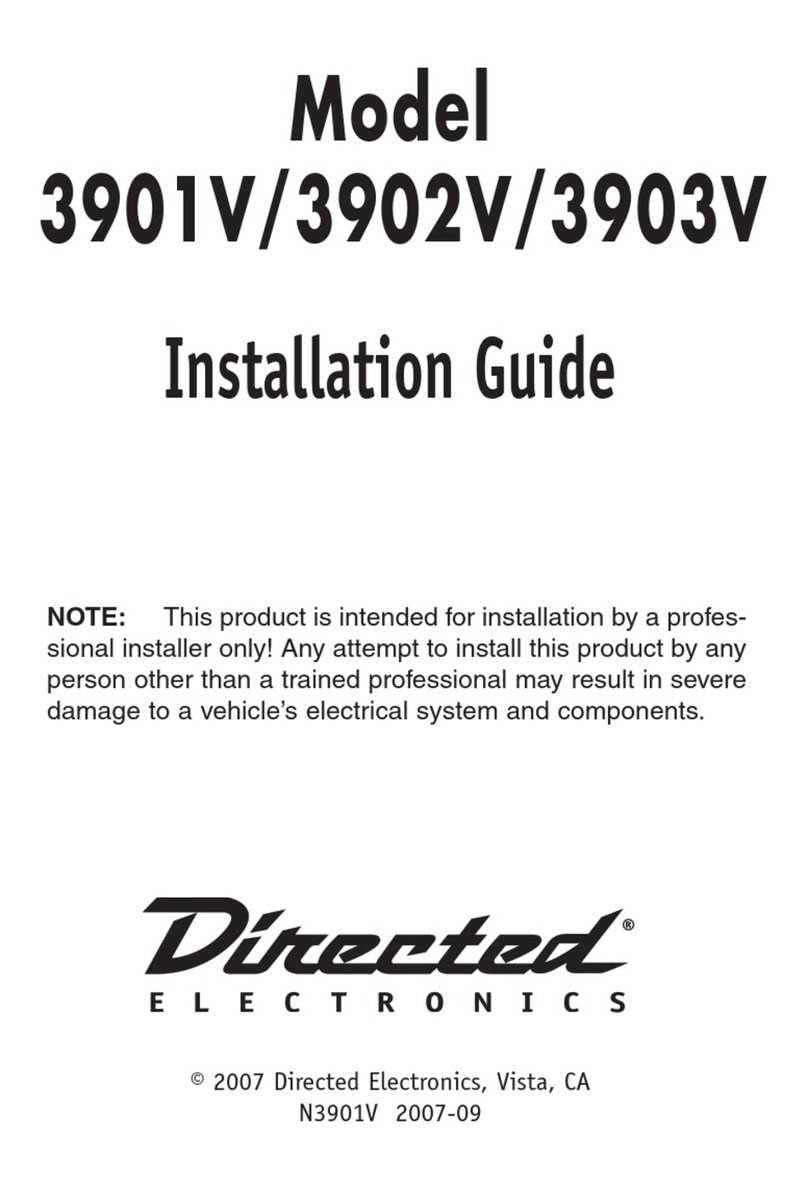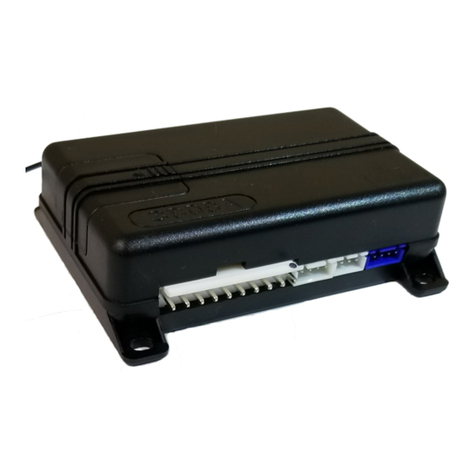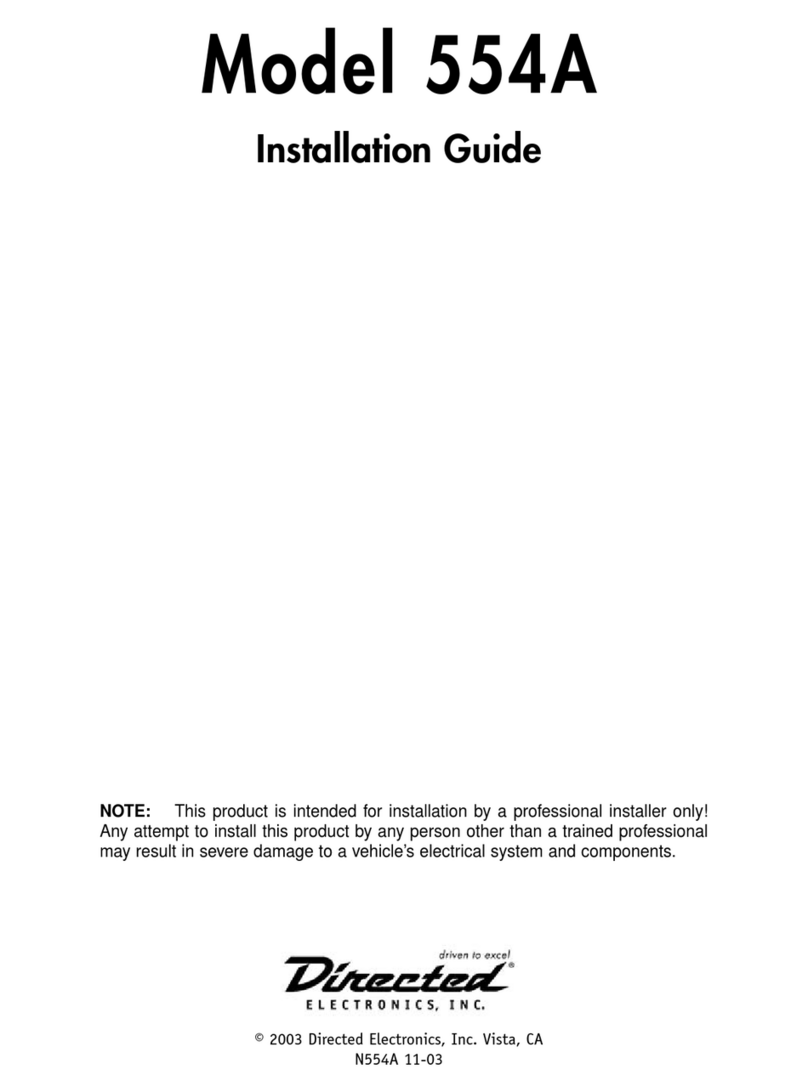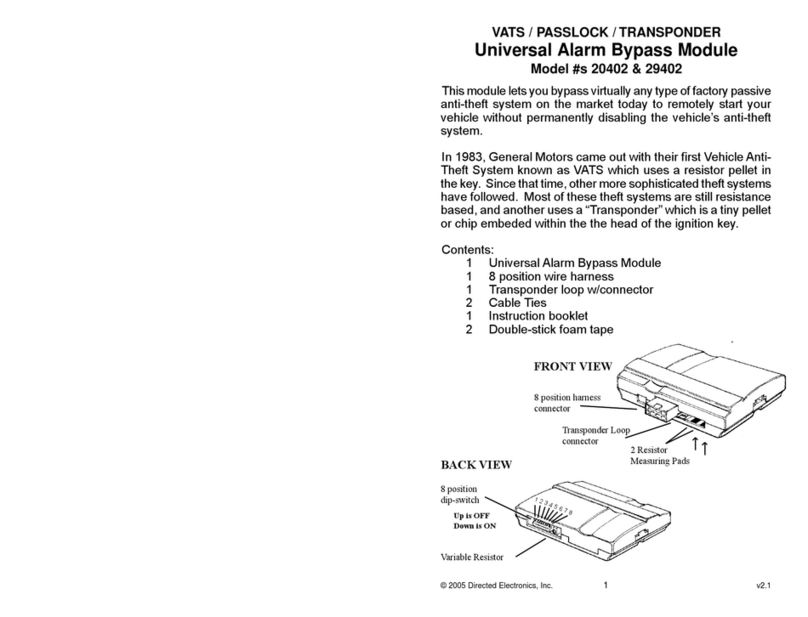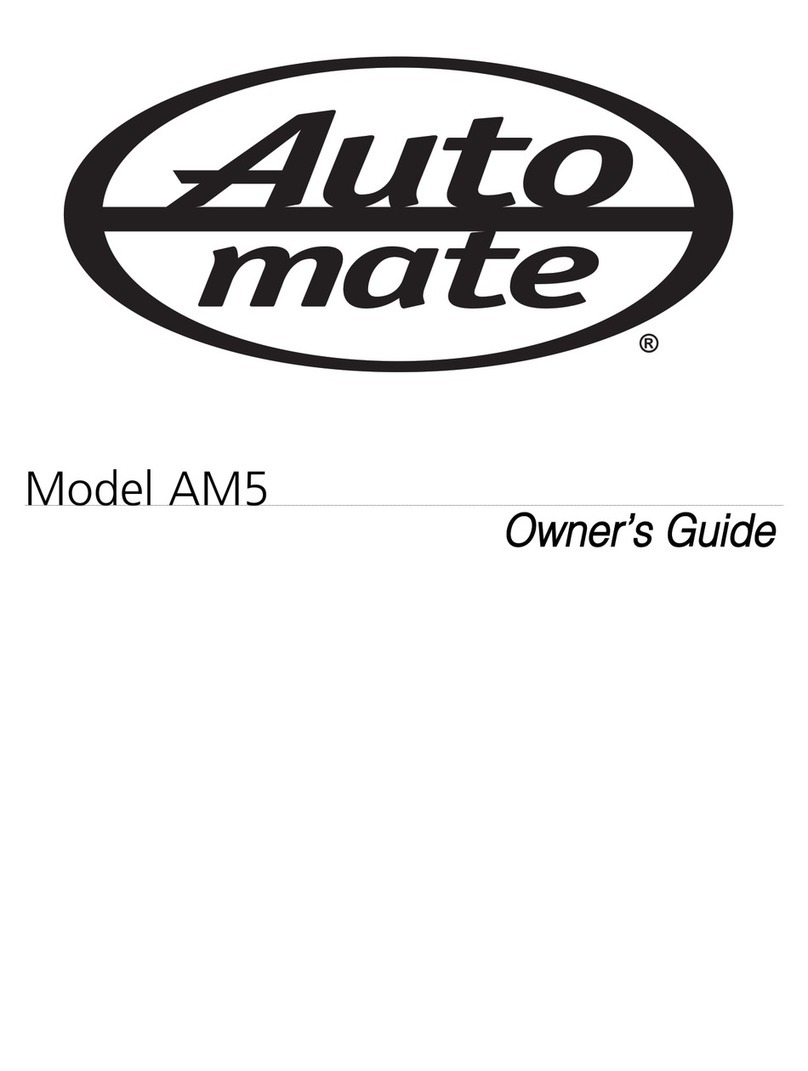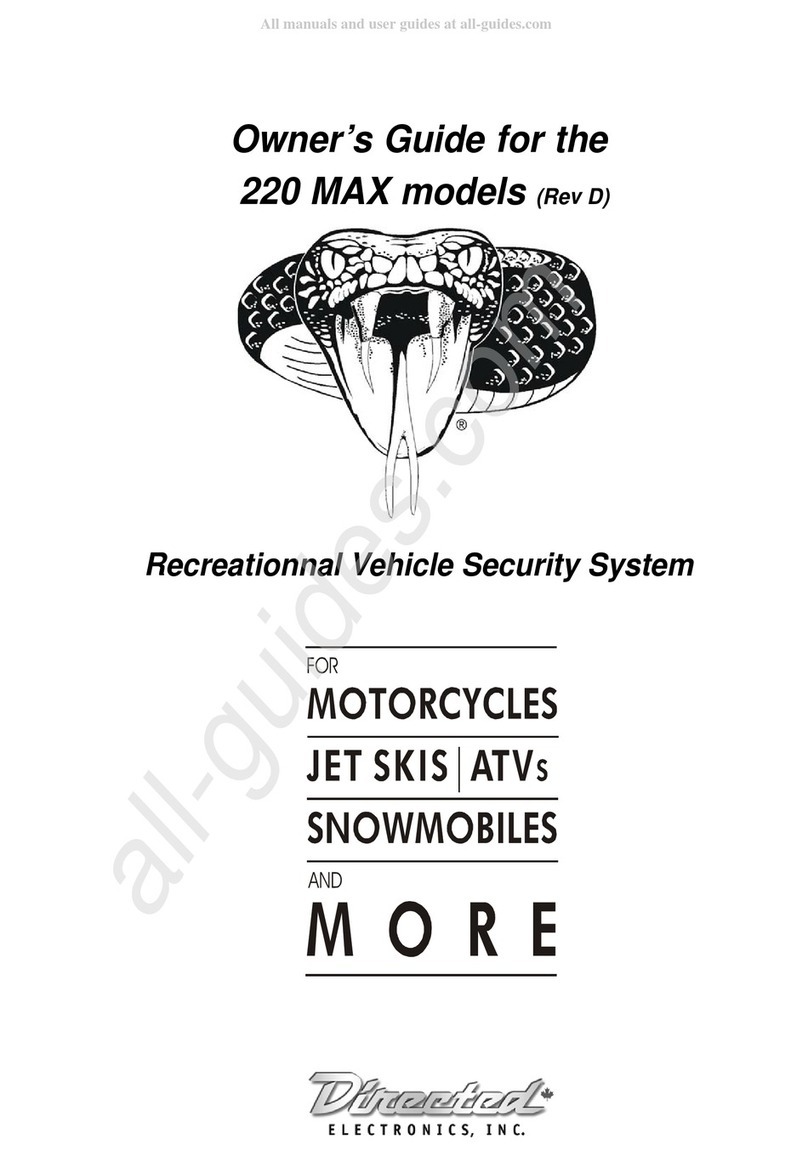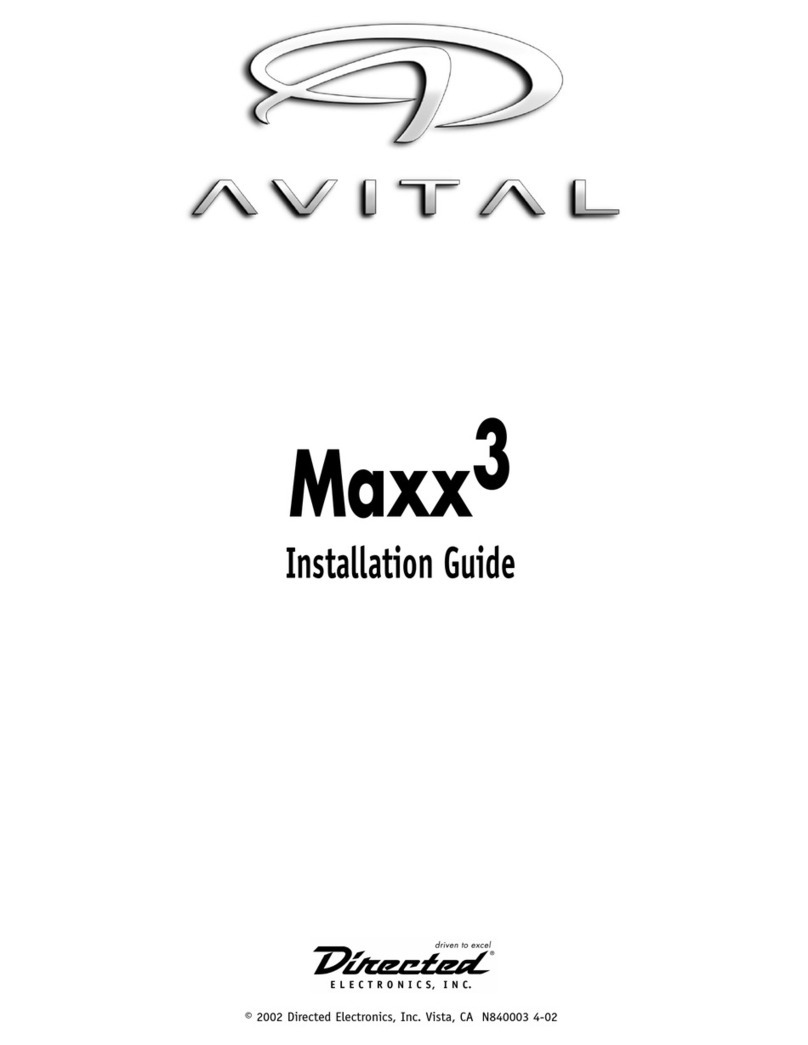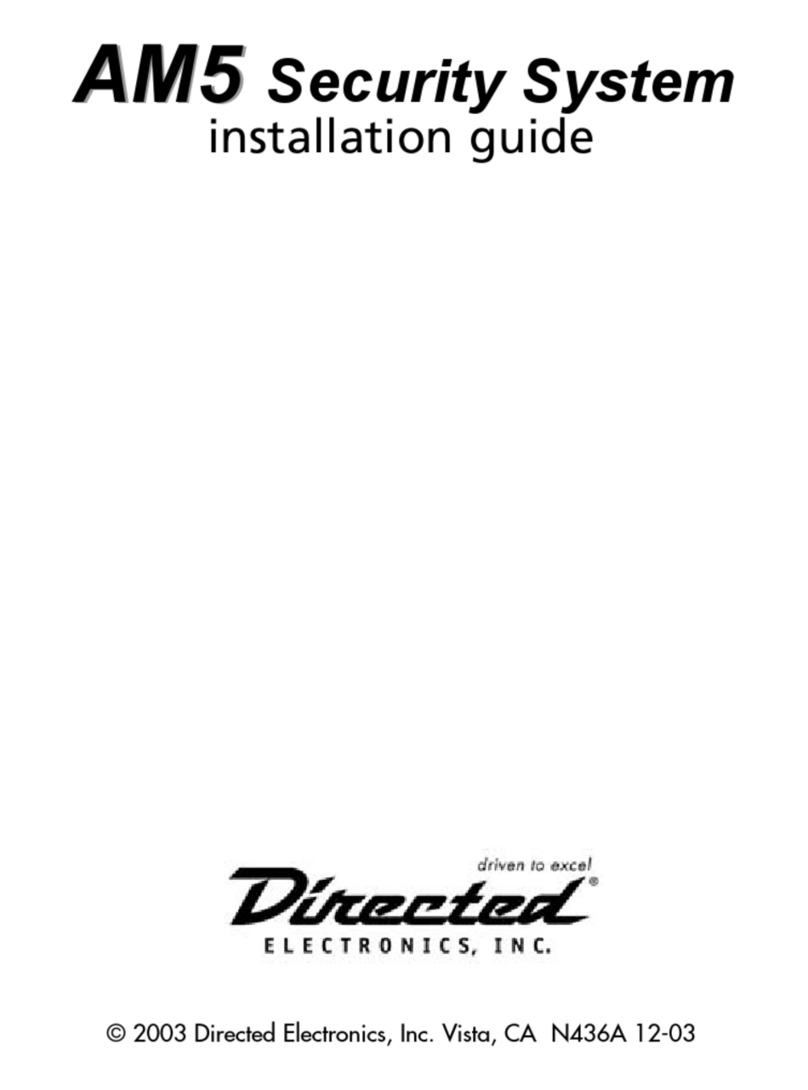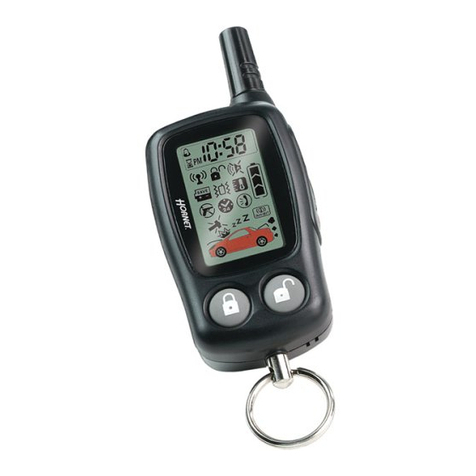
Contents
What is included...............................................................................................5
Control module.........................................................................................5
Installation points to remember............................................................................6
Before beginning the installation.................................................................7
After the installation .................................................................................7
Tools required...........................................................................................8
Deciding on component locations........................................................................9
Control module.........................................................................................9
Integrated LED/Valet switch......................................................................10
Starter kill relay ......................................................................................11
Finding the wires you need ..............................................................................12
Obtaining constant 12V ..........................................................................12
12V switched ignition wire ......................................................................13
Parking light wire....................................................................................14
Door pin switch ......................................................................................16
Making your wiring connections .......................................................................17
Primary harness (H1) ..............................................................................18
Auxiliary harness (H2) ............................................................................18
Door lock harness (H3)............................................................................18
Wire connection guides...................................................................................19
Primary harness (H1) ..............................................................................19
Auxiliary harness (H2) ............................................................................25
Door lock harness (H3) ...........................................................................26
Plug-in harnesses ....................................................................................26
Onboard dual stage shock sensor .....................................................................27
Internal polarity jumper....................................................................................29
Bypassing sensor inputs ..................................................................................30
Table of zones ................................................................................................31
Long term event history ....................................................................................32
Rapid resume logic..........................................................................................32
High security disarm........................................................................................33
Feature programming .....................................................................................34
After programming a feature....................................................................35
Accessing features ..................................................................................35
Accessing menus ....................................................................................35
Exiting feature programming ....................................................................36
Bitwriter only features..............................................................................36
Feature menus ........................................................................................37
Transmitter learn routine...................................................................................39
Exiting feature programming ....................................................................40
